Polaris Women Trailblazers
Introducing the Women that were not just along for the ride.

Gertie Hetteen - A Polaris Women Trailblazer Amazing Changes Are Coming! Polaris Industries
In Part 2 learn about
- Gertie Hetteen, a Polaris Women Trailblazer, and a few others too.
- Discover what Gertie chose to do after graduating from Roseau High School in 1948.
- Discover how World events impacted the future of Polaris.
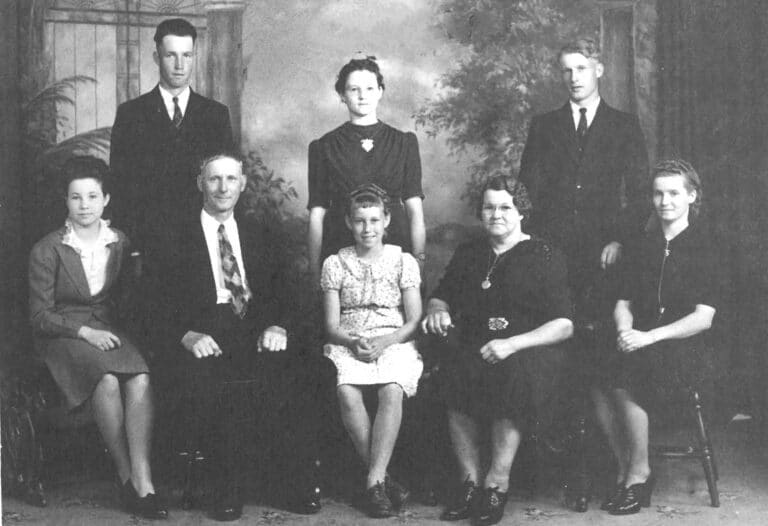
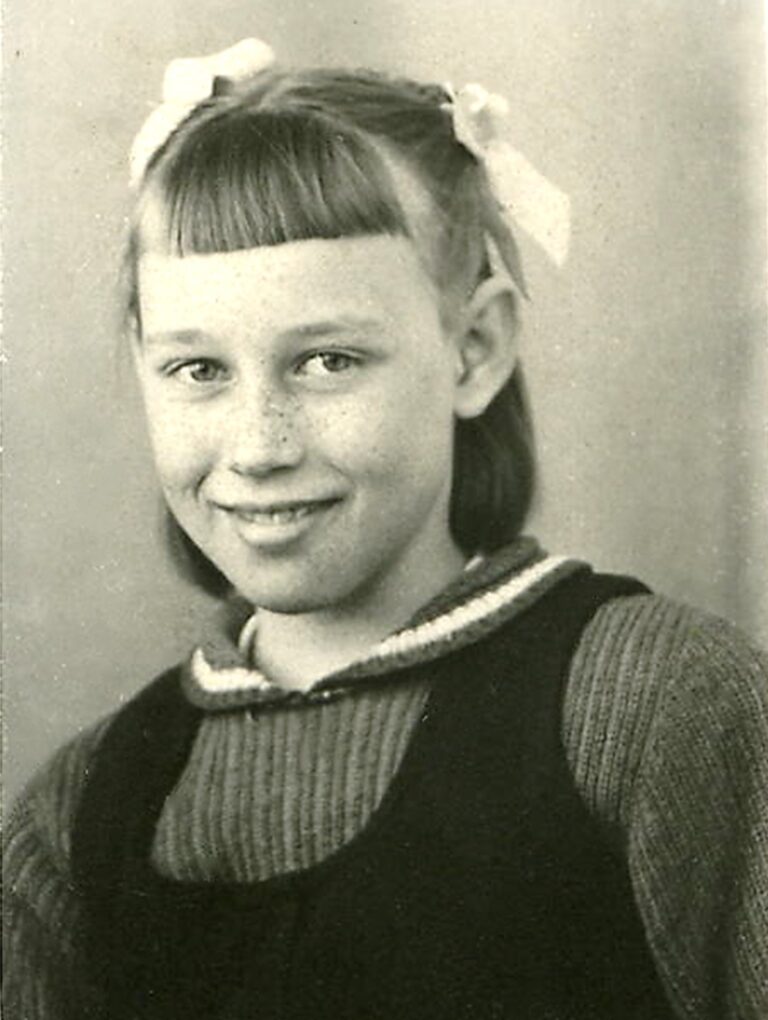
The Start of Gertie Hetteen's New Journey
Gertie as an elementary school student.
Falun School District #36 West, Roseau County, Minnesota
Gertie and her siblings were enrolled in a one-room schoolhouse with one teacher responsible for all the students in the Falun school district. The school did not have electricity or plumbing. The heat was supplied by a wood stove with lanterns lighting the dark.
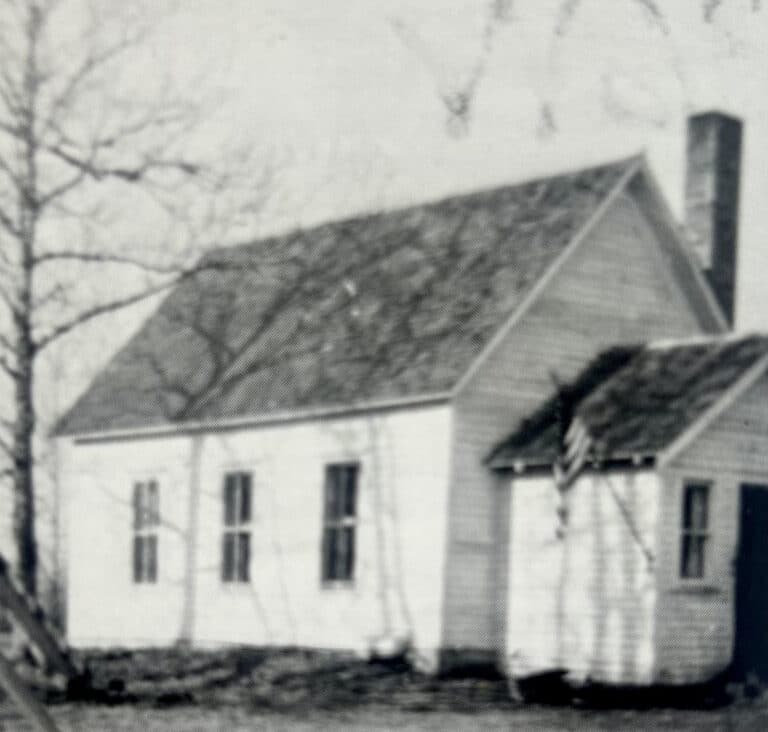
Gertie would ski to school during the winter months wearing a one-piece snowsuit her mother had made, keeping her warm in the frigid winter weather.
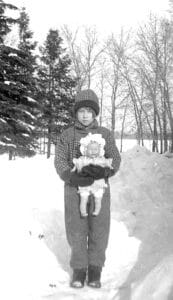
As time passed, Gertie’s life as a young girl living on a dairy farm and attending a rural school would soon change.
From the 19th century until the end of the 1940s, the commencement of eighth grade marked the end of formal education for many students. Young people chose to remain working on their parents’ farm or at their respective family businesses. Some considered getting married, while others sought employment elsewhere to provide additional income to fulfill their family’s needs.
A movement to reorganize and consolidate Minnesota rural schools started in the 1940s. Students began to receive formal education in towns that had high schools. The closest high school for the Erickson Family was Roseau High School in Roseau, Minnesota.
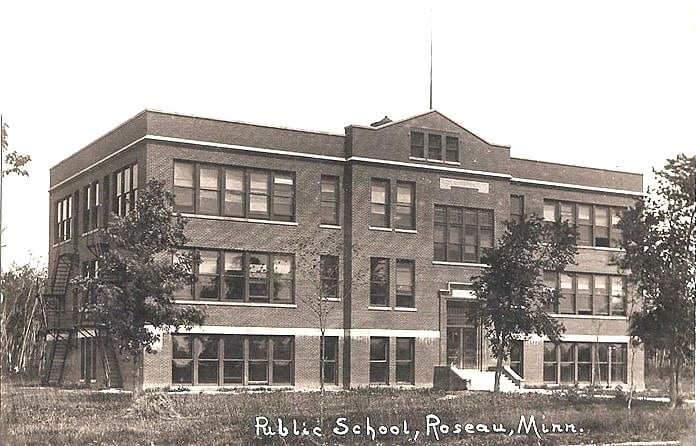
In the 1940s transportation to school was an issue—there were no buses so children had to often walk long distances to the rural schools or find other means to attend classes in their respective school districts. Attending a high school in a town or city was difficult because of the lack of transport. Gas rations were implemented due to World War II which meant only necessary trips were done. Thus parents would have to find boarding rooms or make arrangement with friends or family in towns with high school facilities to accommodate housing.
In the fall of 1943, Gertie’s parents decided Gertie should attend high school. Gertie and her family lived on a dairy farm in Falun Township, approximately 20 miles southeast of Roseau. Since it was not practicable to drive back and forth forty miles each day decisions had to be made. In order to attend high school she would have to leave her home, living away from her family during the school week.
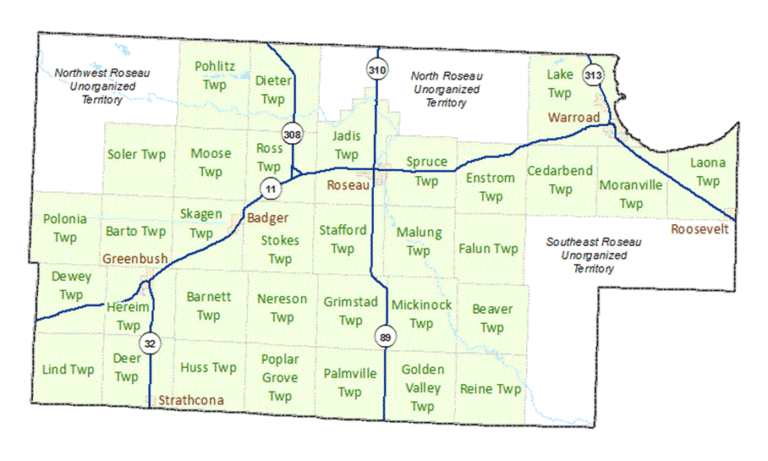
The following photo is taken in the fall of 1943 when Gertie left home to enroll at Roseau High School in Roseau, Minnesota.

Her parents arranged for Gertie to board with Bob and Emma Thorkelson during the school week. Gertie recalls in her memories, “When I went to high school my dad would dig down in his pockets, giving me a handful of change which varied week to week. I think mother knew this amount wouldn’t be enough. So I would also receive $1.20 from mother for my week’s allowance as our own private pact.”
Gertie spoke about being homesick and the adjustment to living in town. The weekends were special when she was home. Her mother and Gertie would spend as much time together as they could. She fondly remembered how the two of them would stay up late into the evening having great talks about everything!
Gertie would stay at the Thorkelsons all four years while attending high school in Roseau.
Following Gertie’s 1948 graduation from Roseau High School, she became employed as a secretary in Roseau, Minnesota.
Allan wanted to buy a gravel truck and own his own business. His older brother Edgar told him, “No! You’re coming to work for me!” After some thought, he agreed to work there full-time. In 1950, Allan borrowed $2,000 from his father-in-law, Albert Erickson, to become partners with Edgar and Edgar’s brother-in-law, David Johnson, at Hetteen Hoist and Derrick.
Young Love
While attending high school as a freshman Gertie Erickson met Allan Hetteen.
They were friends throughout high school, much to Allan’s disappointment, as he had a “crush” on the smiley, talented, and outgoing classmate from the moment he saw her!
After three years of “hanging out” together, she accepted a date with him, realizing she liked him as well. “As time went on soon I learned there was something very special about him.” stated Gertie. They started to date as a couple the summer before their senior year in high school.
1948 Roseau High School Graduates ~ Gertie Erickson and Allan Hetteen!
What trail will they blaze in the future?
The New Beginnings!
Let’s step back in time to learn about Hetteen Hoist and Derrick’s history in the next few paragraphs and photographs.
At the age of fourteen, Edgar Hetteen went to work for his uncle, Oscar Hetteen, at the OK Welding Company in Roseau, Minnesota. At age nineteen he left OK Welding, doing some side jobs with auto body repair and mechanical work.
Edgar married Ruby Johnson on August 31, 1939.
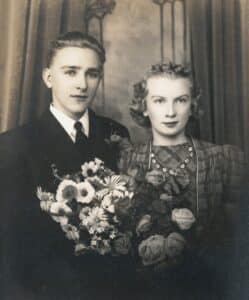
On November 27, 1939, he enrolled at the Dunwoody Institute in Minneapolis.
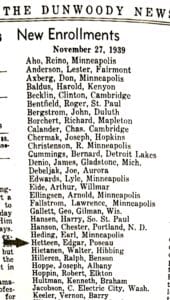
While he was attending school in the metro area, working on improving and changing his life, changes were also happening in rural America!
His mind was thinking of the future and ideas were developing in his thoughts.
By the 1930s, 90 percent of urban residents in the United States had electricity. This was NOT so in rural areas, where only 10 percent of the population had easy access to electricity. Electrical companies argued that it was too difficult to provide service to those areas and, even if they did, there was little money to be made. On May 11, 1935, President Franklin D. Roosevelt signed Executive Order 7037 to create the Rural Electrification Administration (REA), a New Deal public relief program. The answer came in the New Deal, through new rural electrical regulations and cooperatives that did the work that big companies would not. The money for federal loans to bring electric service to rural areas. It revolutionized life in rural Minnesota and across the country.
In 1939, the region’s farm families began forming rural electric cooperatives to receive the same centrally generated electricity that those living in cities and towns already enjoyed.
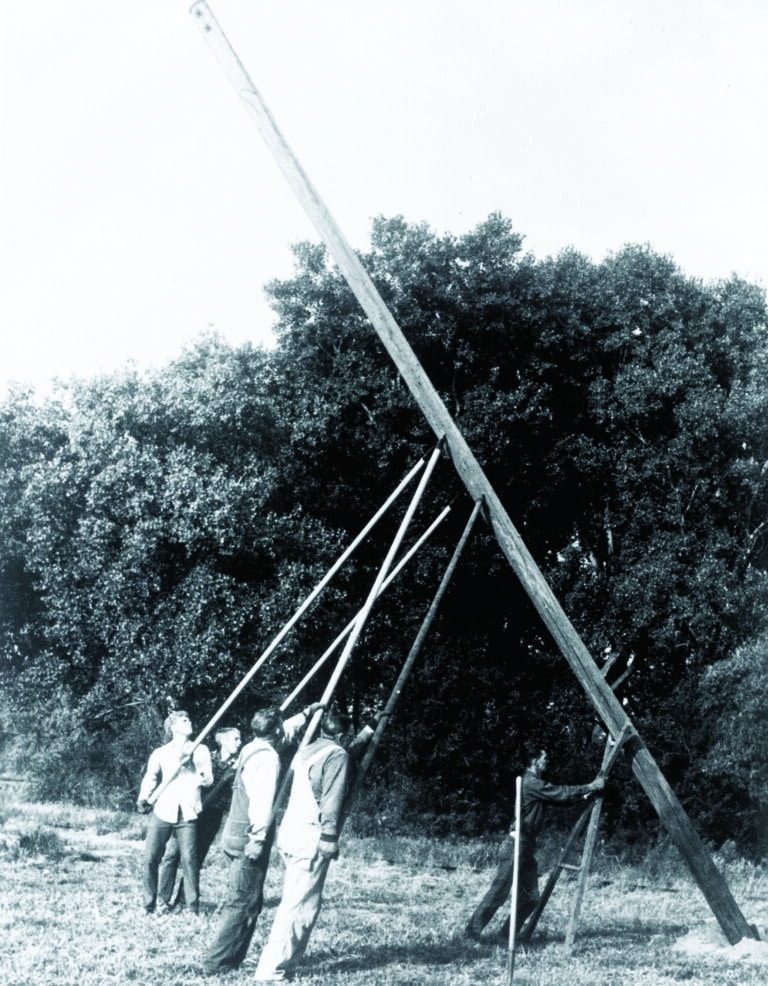
The rural country landscape was changing.
Electrical lines were being constructed to receive power.
Roseau County had about 3,000 rural families without electricity when Rural Electrification was created in 1936.
The first photo was featured in the Roseau Times Region newspaper in November 1937 when a REA crew did the early pole setting. The City of Roseau’s light plant was modernized, and installation of the proposed larger power unit was done. The contract was for $47,000.
Edgar watched all the changes happening across the United States. He was especially interested in the rural changes in Minnesota and his home county. Edgar realized there was a need for assembling hoists and derricks to place utility poles in the ground. He had an idea!
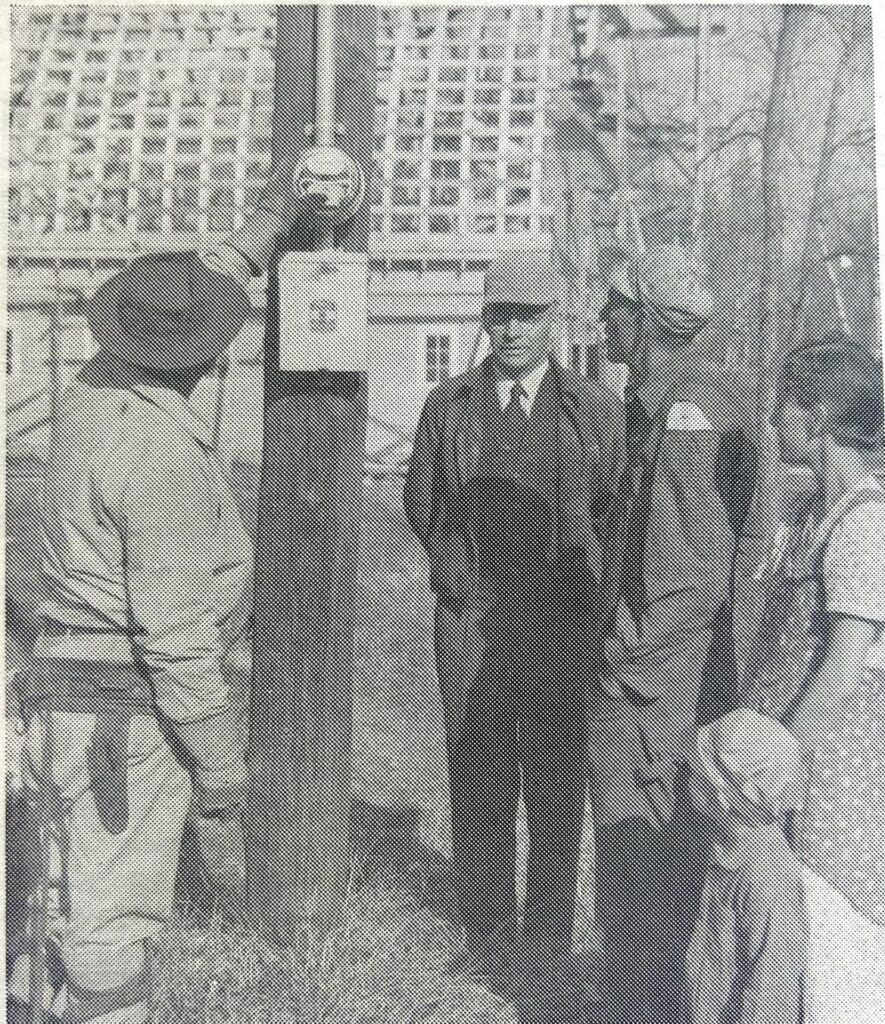
The photo was taken in November 1944 by the Roseau Electric Cooperative. The Roy Bloom farm in Moranville Township was the first farm to have the electrical power turned on from REA in Roseau County. From the left: August Bourque, first manager of REA; Henry Jenson, first president of the board of REA; Roy Bloom; Mildred Bloom; and Milan Bloom.
Military Service and the Draft: WWII

In 1944 during World War II both Edgar Hetteen and David Johnson were drafted, serving in the United States Navy. Allan was a freshman in the Roseau High School system.
Edgar had put a lot of thought into what the next business venture would be. The Electric Hoist Unit was proving to be a successful device and he planned to take on the manufacturing and development of the patent himself. Hetteen Hoist and Derrick was established after he was honorably discharged from the United States Navy in 1944. Electricity had become needed resource with numerous requests coming in daily for electrical power to be installed on their respective farms.
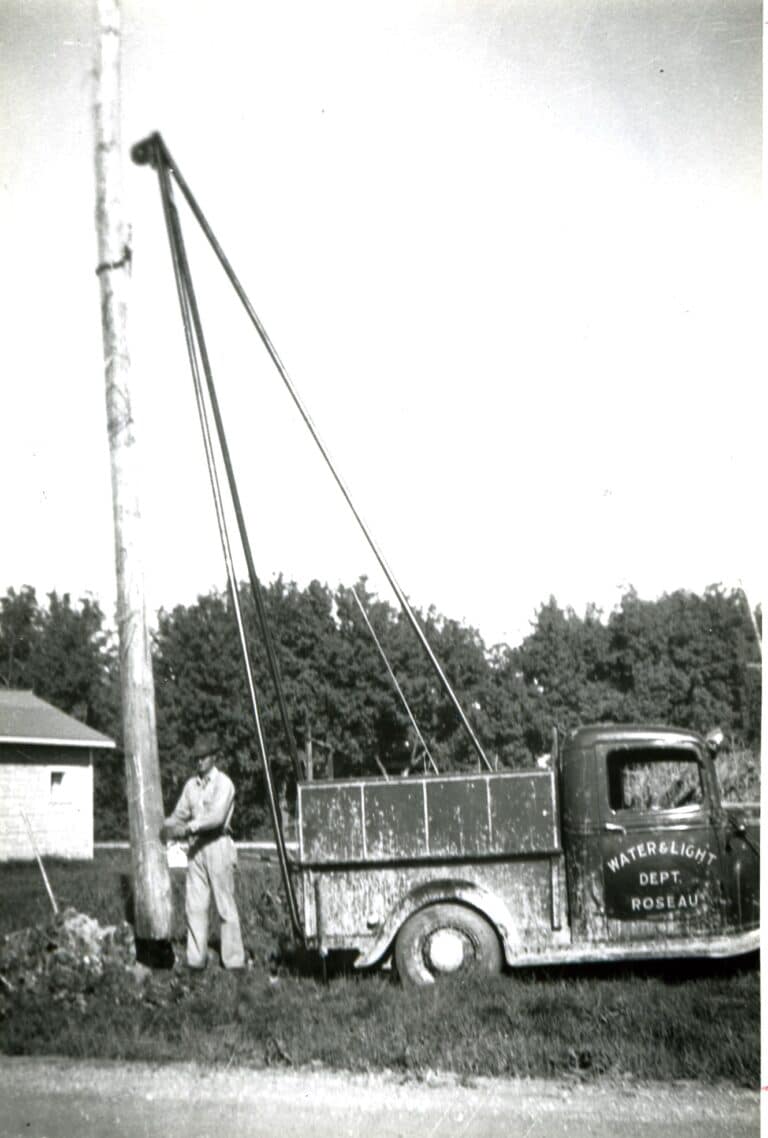
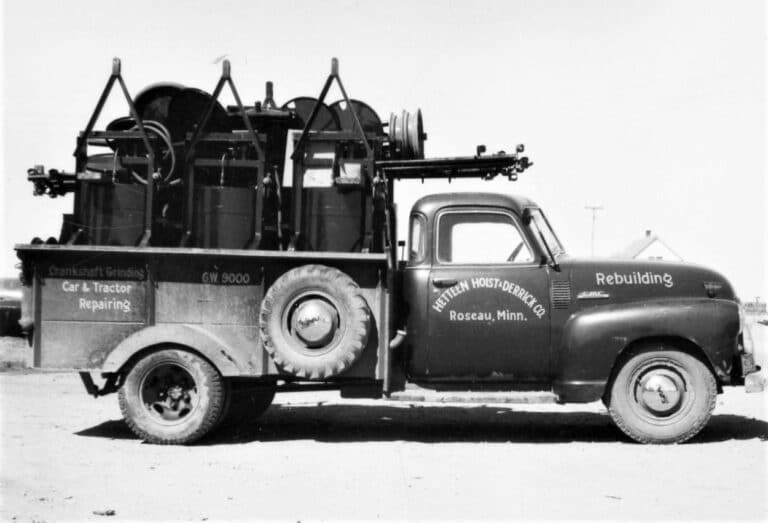
In 1944, at the age of twenty-four, he started Hetteen Hoist & Derrick, using his recent patent design, his experience, and resources. Soon, other products, such as straw choppers, steel boat trailers, and field sprayers, were designed and produced at the company.

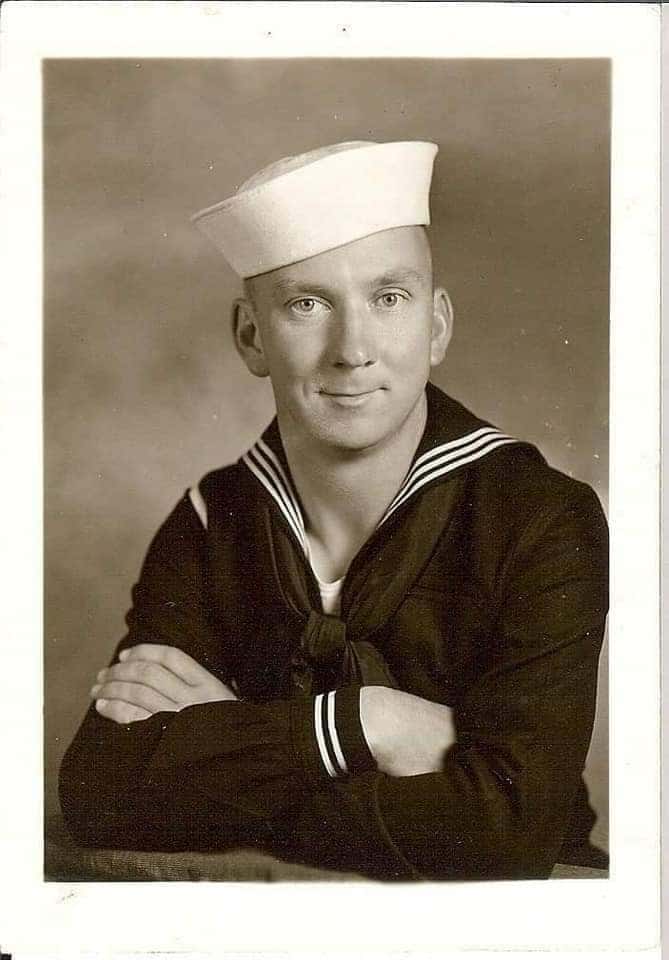
David Johnson turned 21 years while in the United States Navy, stationed in China helping to decommission U.S. ships that were being turned over to China. David received a letter from Edgar Hetteen, saying he had founded a business that made straw-chopping equipment for farm combines and pole-hoisting machines for the electrical cooperatives. He needed financial help.
David immediately became a part of the business by sending eleven dollars per month from his Navy salary of twenty-one dollars per month.
In 1946, David was discharged from the Navy. He returned to Roseau, and immediately began working in partnership with Edgar. They focused on product engineering and manufacturing.
On June 27, 1948, David Johnson married Eleanor Rud in Roseau.
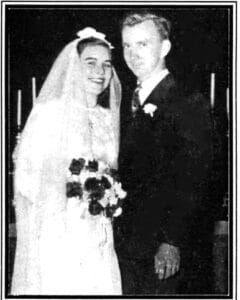
They went to their favorite place for their honeymoon. The Northwest Angle

To learn more about the Northwest Angle, open this link.
https://www.exploreminnesota.com/article/explore-northwest-angle-northernmost-point-lower-48
After dating for almost two years, Gertie accepted Allan’s marriage proposal!
Allan Hetteen married Gertrude Erickson on September 3, 1949, at the Bethel Mission Covenant Church located in Falun Township.
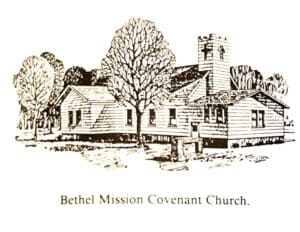
Allan’s brother Edgar, on the left, is the best man. Gertie’s sister Doris is the maid of honor.
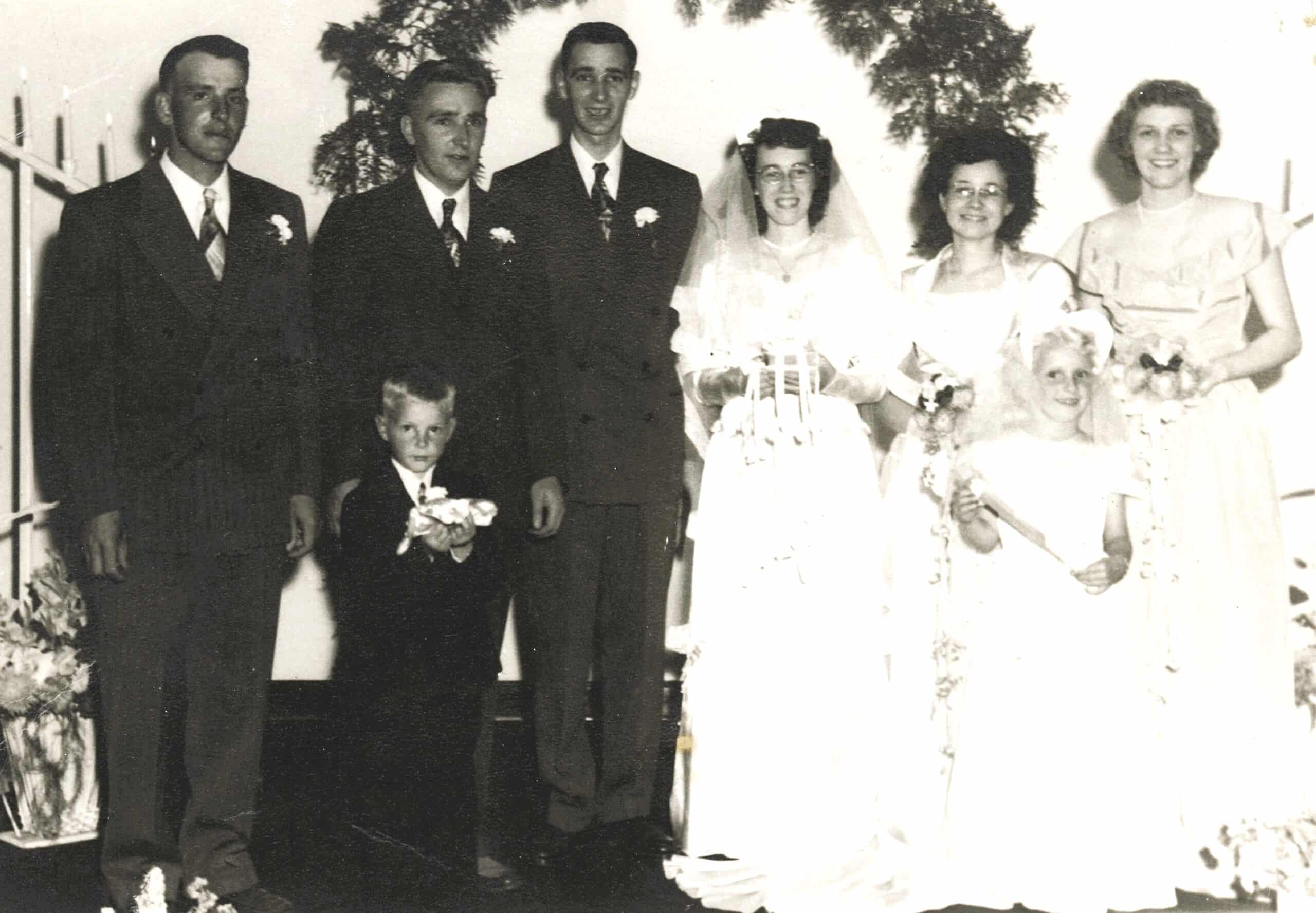
Mr. and Mrs. Allan Hetteen, 1949!

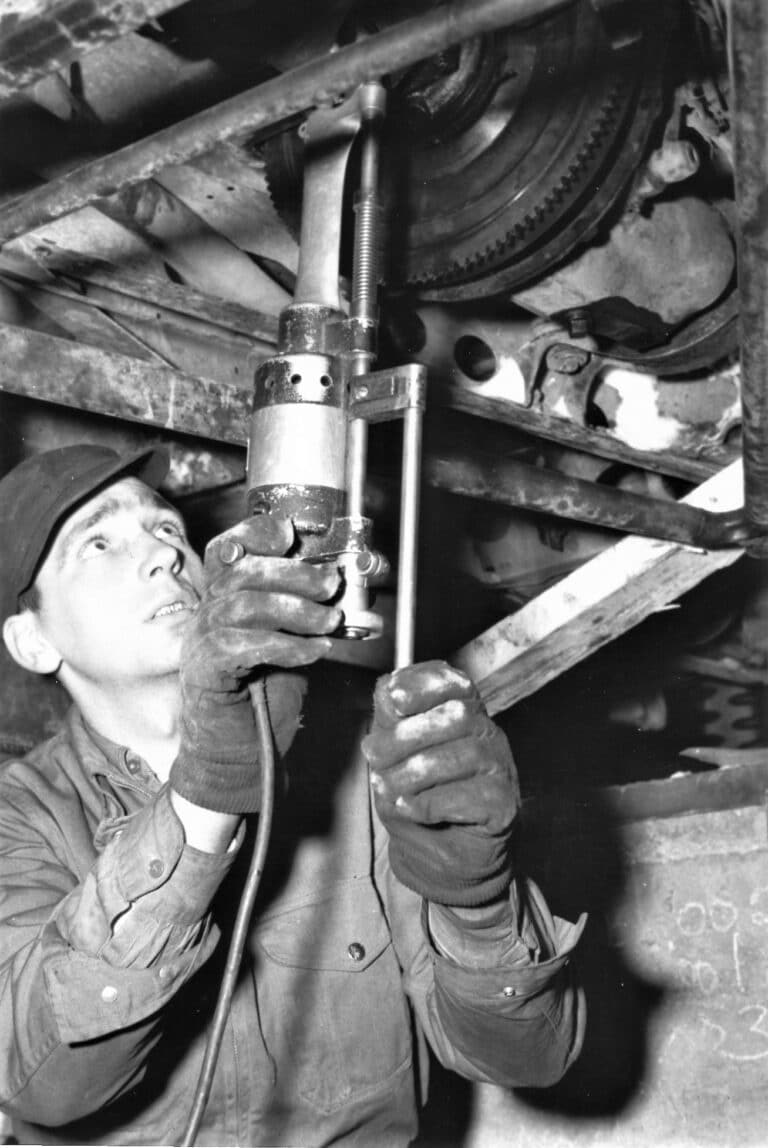
In 1950 with Allan’s added partnership, a business of car salvage and car repairs was brought into the company. Allan was known for his knowledge, mechanic skills, fabricating, and welding. Here he is working on a crankshaft while it’s still in the vehicle.
Gertie worked at the Roseau County Courthouse located in Roseau, two blocks south of the Hetteen Hoist and Derrick Company. She was secretary to Roseau County Agent Melvin Hale, and Roseau County 4-H Club Director Delores Andol.
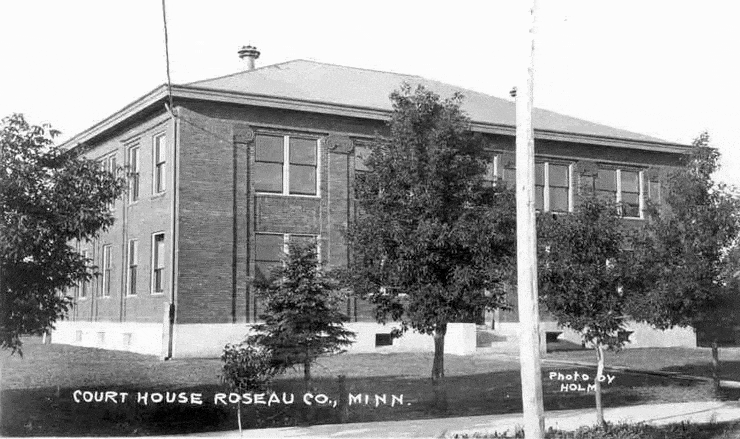
The 1950 photograph from the Roseau Times Region newspaper features the Roseau County Employees.
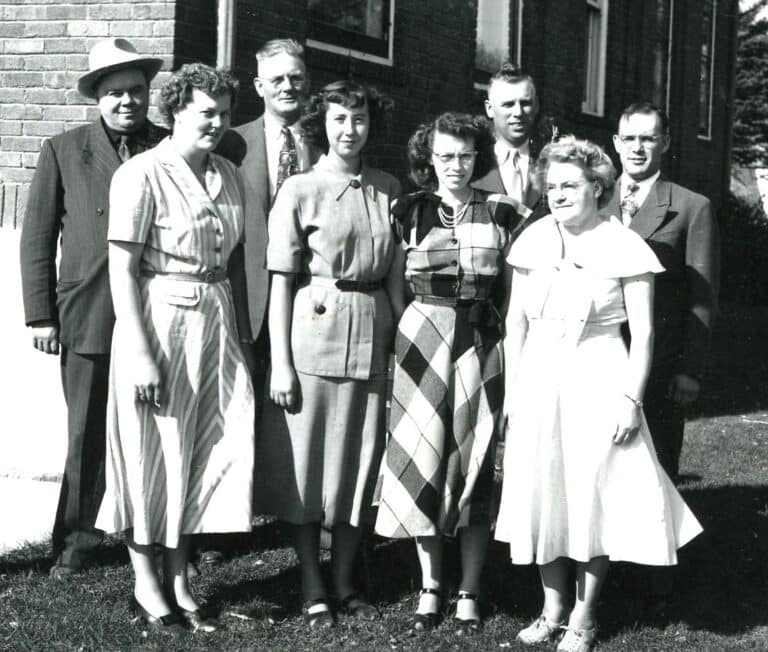
In the back row, left to right:
County Agent Melvin Hale; Roseau County Sherriff E.B. Sillerud; Roseau County School Superintendent Charles Christianson; Roseau County Assessor Clyde Turner.
In the front row, left to right:
Roseau County 4-H Club Director Delores Andol; School Superintendent Secretary Elva Grothe; Roseau County Extension Secretary Gertie Hetteen; Roseau County Librarian LaVonne Mellstrom.
The Joys of Parenthood!
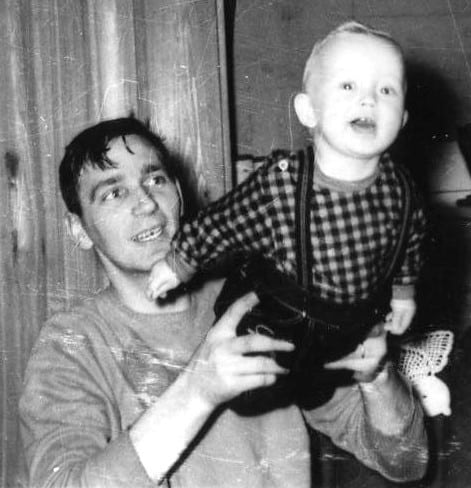
Baby makes three! In February of 1951 Gertie and Allan became first-time parents! Stephen Allan was born!

On July 21, 1953, Gertie and Allan’s family expanded to four. A son, Timothy Jon, was born July 21, 1953, much to the delight of his older brother Stephen! He was known as Timmy or Tim.
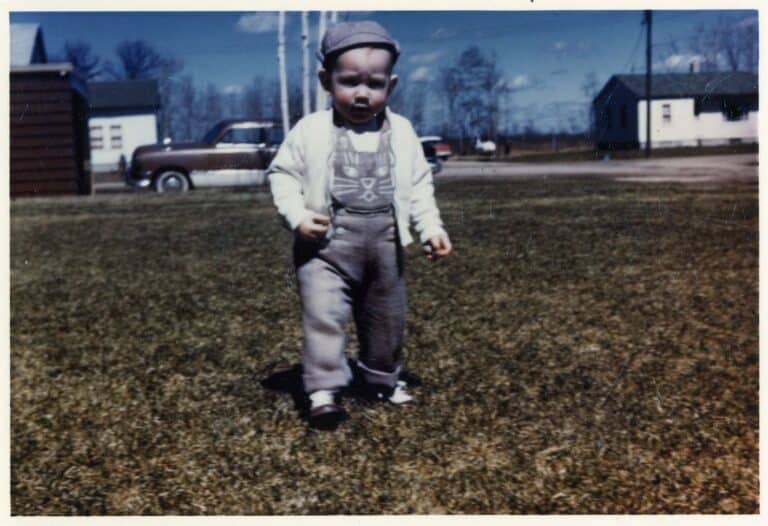
Gertie and Allan could now say “Our Three Sons”! In 1957 on the 23rd day of February, the Hetteen family welcomed Michael Dale. Mike makes the family FIVE! The Hetteen’s are ready to thrive!
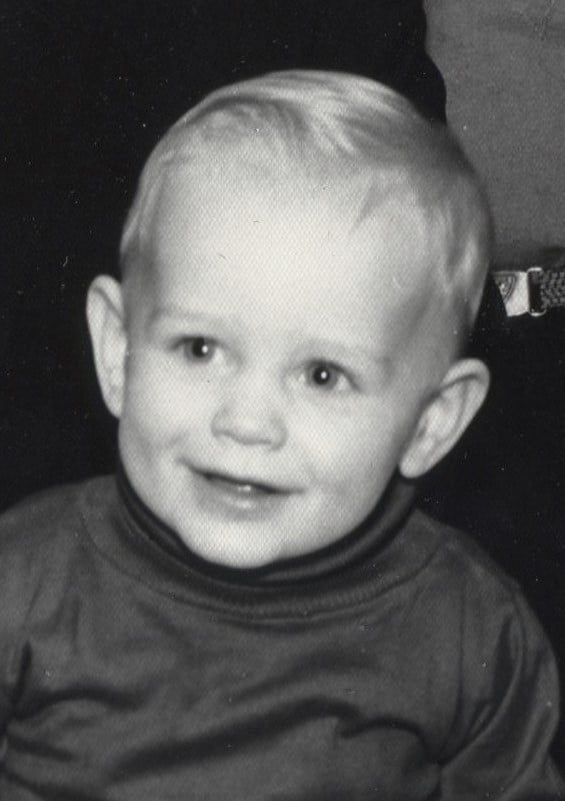
An even number of 4 makes sense! Donavon Mark was born April 7, 1962! He was the delight of many “sewing” ladies as he grew up!
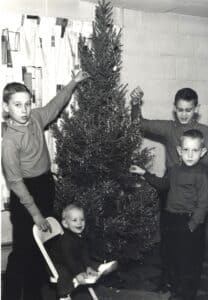
- Why would a shooting star become an essential symbol to so many people?
- What part did Gertie play in improving the comfort of enjoying the winter season?

A Trailblazer for Working Women and Polaris Industries | Part 3 | will tell you!
Coming up next time!
Written History and Research by Carmen Przekwas
History/Research: Roseau Times Region, Roseau Electric, and Roseau Historical Society
Photos and Special memories shared by Mike Hetteen son of Gertie and Allan Hetteen.
All Rights Reserved
